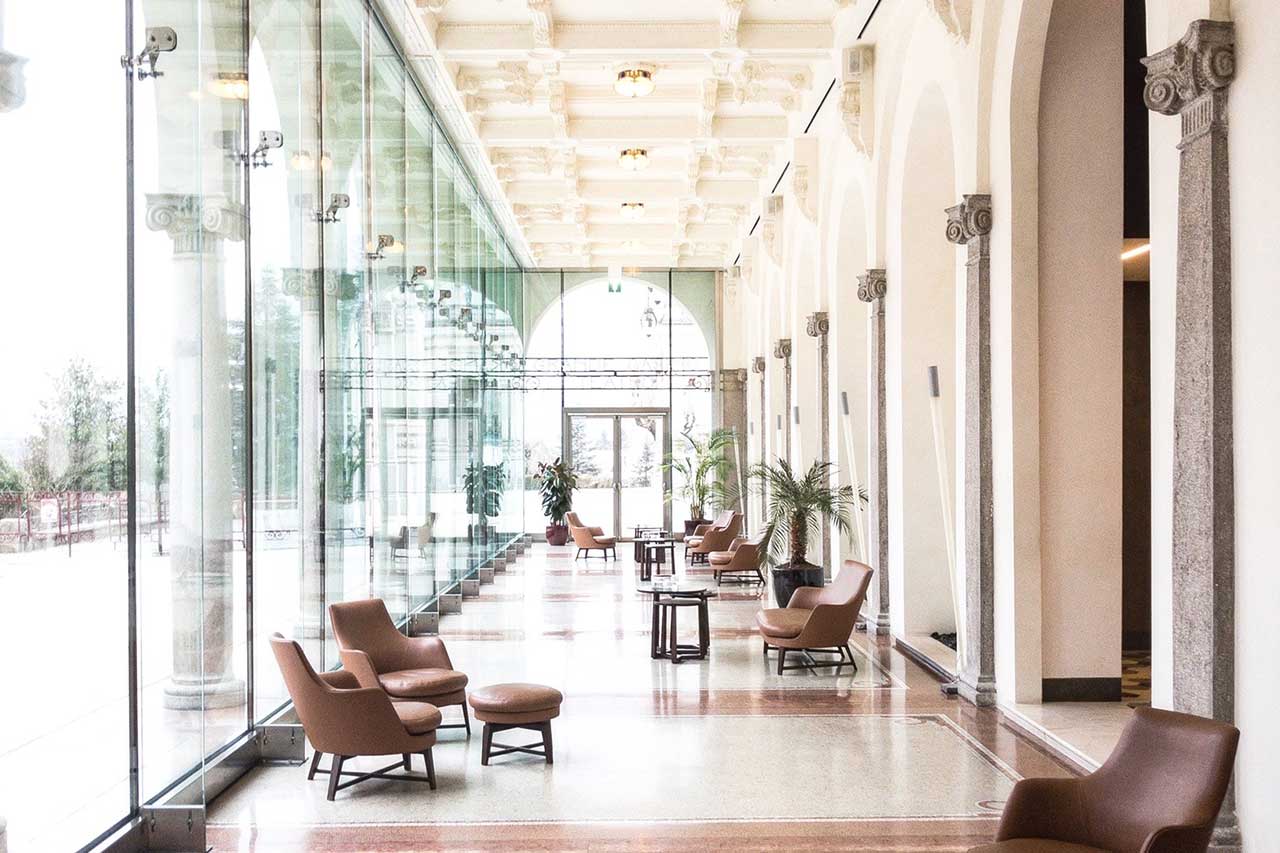
SOLAR CONTROL “The solar control window film market will nearly double in size in the next four years, according to a report by Lux Research Inc.” (Window Film Magazine, July 2, 2014, Category: Featured Content, Industry News, www.windowfilmmag.com/index.php/archives/5738). As the use of architectural glass grows — so do the regulations relative to energy efficiency in our buildings.
An installation of a quality insulating, Low-E window film conserves energy and reduces heat gain and loss through windows all year long — substantially reducing HVAC expense. These films can reduce AC costs by blocking up to 73 percent of the sun’s heat in warmer months and reducing heat loss by up to 30 percent in colder months. They help manage nuisance glare and offer daylighting advantages. Many meet LEED Energy and Atmosphere Prerequisites and qualify for LEED credits. A manufacturer’s authorized window film dealer can provide their products’ energy performance ratings according to the National Fenestration Rating Council (NFRC) certification process that enables product comparison. An NFRC label provides valuable units of measure when applying for LEED credits.
SECURITY Architects and engineers are also responding to demands for improved safety in our buildings by incorporating high performing safety film (a virtually invisible, low profile measure of security) into their projects. Safety window films hold glass in place upon impact, reducing the risk of injury or damage in the event of blasts, violent weather or vandalism — an unfortunate nature of our times. A reputable window film dealer should provide you with a particular safety film’s GSA or other credible, independent blast testing results.
SOLAR CONTROL SECURITY Of course you can double your fun with two films in one by selecting a solar control security window film for an application that requires both features. When asked which is most important, solar control or improved security, many clients struggle with an answer. Often they are equally concerned with potential break-ins, theft and vandalism as well as managing the negative effects of solar heat gain, heat loss and temperature imbalances. Between total solar control and total security, there lie a significant number of films with varying percentages of combined solar control benefits and security strengths.
Knowledgeable dealer representatives can provide you with specific film specifications and reliable, independent test reports for UV Protection, Abrasion Resistance, Corrosion, EMI (Electromagnetic Interference) Shielding, Break and Entry, Windstorm, Blast Mitigation, and Intensified Weathering among others. Your dealer can provide performance results such as UV Light Rejected, Visible Light Transmitted and Rejected, Solar Heat Reduction, Glare Reduction, Shading Coefficients, Emissivity and U Values. Your representative should be prepared to help guide you toward the appropriate window film for your project.
With film technology advancing at such a fast pace, a good rule of thumb is to rely upon a manufacturer that stands behind their products with solid warranties (some actually match existing in-force window manufacturer’s warranties). Additionally, choose a manufacturer that invests heavily in research and development along with training and education for their authorized dealers. Ultimately, a quality window film retrofit is an affordable option over glass replacement and can generate a rapid return on investment — often within two to three years.
Corporate Location: 23042 Mill Creek Drive, Laguna Hills, CA 92653
Copyright 2026 - American Window Film | All Rights Reserved | Contractor's License #1054307